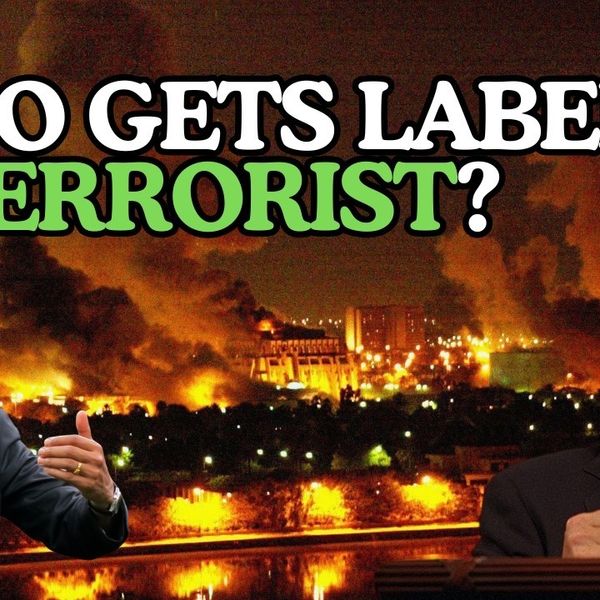Earlier this year, the U.S. State Department’s Office of the Inspector General issued a report confirming what everybody already knew to be true: that the executive branch had failed to adequately consider civilian casualties in the sale of American-made bombs to Saudi Arabia and the United Arab Emirates — sales that proceeded despite congressional efforts to block them. These sales were just the latest in a long string of ill-advised U.S. arms transfers, approved by administrations of both political parties, to abusive governments. In just the past 10 years, American weapons have been used to repress democratic protest movements in Egypt and Guatemala, bomb refugee camps in Nigeria, and rain down on wedding parties and school buses in Yemen.
In spite of widely recognized risks and predictable consequences, Congress has never successfully blocked an arms sale. In 2019, congressional failure to halt irresponsible sales reached a zenith when President Trump used emergency powers to authorize an arms deal with Saudi Arabia despite overwhelming bipartisan opposition. These sales, which run counter to U.S. values and long-term interests, are enabled by insufficient human rights and corruption safeguards, scant tools for congressional oversight, and a lack of transparency. The current state of affairs is untenable, and reform is long overdue.
A new report from Center for Civilians in Conflict and the Stimson Center reflects an emerging bipartisan consensus on the need for legislative arms sales reform, and provides a reform agenda based on recommendations by leading experts, think tanks, and legislators themselves.
The report provides three main ways members of Congress can act now to reform the arms sales regime and ensure that U.S. arms sales are in line with U.S. values and long-term interests:
1. Force the executive branch to prioritize human rights risks
In the Arms Export Control Act of 1976, Congress explicitly recognized the risks associated with selling or transferring arms abroad, requiring the president to consider whether a sale might “increase the possibility of outbreak or escalation of conflict.” In practice, however, concerns around fueling conflict, civilian harm, and human rights abuses are often subordinated to economic and geopolitical considerations.
Indeed, the recent OIG report shows the Trump administration failed to adequately assess the risks and implement risk mitigation measures to reduce civilian casualties and legal concerns associated with the transfer of precision-guided munitions to the Saudi-led coalition in Yemen in May 2019.
To prevent similarly harmful sales, Congress can and should require the executive branch to more systematically restrict or condition sales to governments with records of civilian harm and human rights abuses. For example, the State Department does not currently vet arms recipients for human rights abuses despite a requirement to do so under the Leahy law. To prevent arms sales to rights-abusing security forces, Congress should explicitly clarify the applicability of these laws to all arms transfers.
Congress should also legislate that the standard terms and conditions for all arms sales agreements include a contractually binding requirement to adhere to human rights law and international humanitarian law. Finally, Congress should require that the executive branch evaluate the risk of sales to each potential recipient and develop a risk mitigation plan, considering factors such as a state’s political stability, levels of corruption, human rights record, involvement in armed conflict, and the type of weapon in question. The SAFE-GUARD Act — led by Sens. Robert Menendez (D-N.J.), Patrick Leahy (D-Vt.), and Tim Kaine (D-Va.) — and Sen. Patty Murray’s (D-Wash.) Values in Arms Export Act of 2020 are two recently introduced bills that address these concerns.
2. Strengthen congressional oversight and approval powers
Congress has ceded most decision-making authority over arms transfers to the executive branch and often lacks the information and procedural power to make informed decisions about potentially harmful sales. Meanwhile, the president has sweeping powers and tools to move forward with sales, even in the face of congressional opposition.
To take back congressional power over arms transfers, Congress should require an affirmative vote of approval for the riskiest sales. Advocated by many arms sales experts, this so-called “flip the script” approach would reassert congressional powers based on the type of weapon, dollar amount of the sale, and recipient.
Congress should also limit the president’s emergency authority, which allows the executive to press forward with unpopular sales — such as in the recent case of Saudi Arabia. To do so, Congress should restrict emergency sales to key allies befitting a true national security emergency. Sen. Menedez’s Saudi Arabia False Emergencies (SAFE) act would do just that and should promptly be enacted by Congress.
Finally, Congress should close loopholes that allow risky sales to avoid oversight. Currently, the executive branch is able to evade congressional notification requirements of a sale by breaking it into multiple, low-value transactions. Together, these transactions can add up to billions of dollars and contribute to wanton human suffering around the world. To ensure proper oversight, Congress should mandate congressional notification of an arms sale once the total monetary value of smaller transfers to a country in a fiscal year exceeds the existing financial thresholds for notification of a single sale.
3. Increase transparency around arms sales
The executive’s management of arms transfers has created an opaque system with little public accountability. For example, despite the large financial footprint and massive foreign policy implications of direct commercial sales, the American public remains in the dark about the specific equipment being purchased, the timeline for the sale and delivery of equipment, and the final dollar amount of the sale. In many cases, the public does not know which defense companies are involved in a deal. Without these key facts, it is impossible for members of the media, civil society organizations, and the public to assess the wisdom or risk of various sales.
Congress must ensure that the United States sets a standard for arms transfer systems that are responsible, transparent, and accountable. It can do so by requiring the executive to produce comprehensive public reporting on the arms transfer process and risky sales. Congress can also prioritize the issue by establishing a fully staffed subcommittee to evaluate the risks of sales and regularly holding public hearings to ensure civil society and the public at large have the information they need to weigh in on these important decisions.
***
For too long, dangerous sales have been a feature, not a bug, of the U.S. arms sales regime. These three areas of change are the basis of much-needed reform to ensure that arms transfers are thoroughly vetted, transparent, and align with U.S. values and interests. They provide Congress with the power necessary to wrest control over sales back from the executive and to stop American arms from contributing to human suffering around the world. For our full reform agenda, see CIVIC and Stimson’s new report here.















